
Tyres do not typically carry the weight of our vehicles but it is only the air inside them does. There are three basic elements which determine the load capacity of a tyre namely, the size of the air chamber formed between the tyre and wheel, the strength provided by the engineering construction of tyre to hold air pressure, and the amount of air pressure actually in the tyre.

Most flat tyres or zero pressure air are the result of slow leaks that go unnoticed and allow the tyre's air pressure to escape over time (Fig.1). Therefore, monitoring tyre air pressure in real-time is extremely important. Fortunately, in these days we practically have such devices inbuilt in tyre, called, Tyre Pressure Monitoring System or TPMS, Fig.2. Run Flat Tyres (RFT) are typically designed passenger car tyre or light truck tyres or SUVs to run even when they are flat or when there is zero inflation pressure. It is more of a safety issue - it's design allows you to continue driving in deflated condition to a point were you can safely get the tyre changed or repaired. To all RFT, therefore, it is was required to fit in TPMS system (Fig.2) to indicate driver that the tyre is running with low pressure or tyre is failed and is under zero pressure now.

Tyre pressure sensor (pressure transmitter) converts the physical quantity 'tyre pressure' into an industry-standard signal , that enables the driver if the tyre pressure is becoming low or the tyre has already failed during driving (Fig.2). Mandates for TPMS technology in new cars have been continued to proliferate in the 21st century in Russia, the EU, Japan, South Korea and many other Asian countries. As of November 2014, the above fitment rate stands had been to ~ 54% of passenger cars.
Tyre pressure has profound influence on vehicle safety and efficiency. Tyre-pressure monitoring (TPM) was first adopted by the European market as an optional feature for luxury passenger vehicles in the 1980s. The first passenger vehicle to adopt TPM was the Porsche 959 in 1986, using a hollow spoke wheel system. In 1996 Renault used the Michelin PAX system. In the United States, TPM was introduced by General Motors for the 1991 model year for the Corvette in conjunction with Goodyear run-flat tyres. The system uses sensors in the wheels and a driver display which can show tyre pressure at any wheel, plus warnings for both high and low pressure (Fig.2). It has been standard on Corvettes ever since.
The dynamic behavior of a pneumatic tyre is closely connected to its inflation pressure. Key factors like braking distance and lateral stability require the inflation pressures to be adjusted and kept as specified by the vehicle manufacturer. Extreme under-inflation can even lead to thermal and mechanical overload caused by overheating and subsequent, sudden destruction of the tyre itself. Additionally, fuel efficiency and tyre wear are severely affected by under-inflation. Tyres do not only leak air if punctured, they also leak air naturally (air permeability), and over a year, even a typical new, properly mounted tyre can lose from 3 to 9 psi, roughly 10% or even more of its initial pressure.

Maintaining proper tyre inflation is essential to vehicle handling, overall tyre performance, and load carrying capability. A properly inflated tyre will reduce tread movement, reduce rolling resistance, and increase water dispersion. Reduced tread movement gives the tyre a longer tread life. Reduced rolling resistance, the force required to roll a loaded tyre, results in increased fuel efficiency. Increased water dispersion decreases the possibility of hydroplaning. Both over-inflation and under-inflation can cause premature tread wear and possible tyre failure. Over-inflation can result in decreased traction and the inability to absorb road impact. Overinflated tyres will show premature wear in the centre of the tread. On the other hand, under inflation will cause sluggish tyre response, decrease fuel economy, excessive heat buildup, and tyre overload. An under inflated tyre will show premature wear on both outside shoulders (Fig.3).
The European Union reports that an average under-inflation of ~ 6psi , produces an increase of fuel consumption of 2% and a decrease of tyre life of 25%. The European Union concludes that tyre under-inflation today is responsible for over 20 million liters of unnecessarily-burned fuel, dumping over 2 million tones of CO2 into the atmosphere, and for 200 million tyres being prematurely wasted worldwide. In 2018, a field study on TPMS shows that TPMS fitment reliably prevents severe and dangerous under-inflation and hence yields the desired effects for traffic safety, fuel consumption and emissions. The above study also showed that there is no difference in effectiveness between dTPMS and iTPMS and that the TPMS reset function does not present a safety risk.
The Tyre Pressure Monitoring System (TMPS) is an electronic system in the vehicle that monitors tyre air pressure and alerts the driver when it falls dangerously low. This system involves a pressure sensor (Fig.4) fitted in tyre air filling valve. However, a given TPMS system can only work with compatible sensors in the tyres.

TPMS notifies on vehicle dash board when vehicle’s tyre pressure is low or is going flat and this help to maintain proper tyre pressure (Fig.2). TPMS can directly or indirectly, increase vehicle safety on the road by improving your vehicle’s handling, decreasing tyre wear, reducing braking distance and bettering fuel economy. The significant advantages of TPMS are summarized as follows:
- Fuel savings: For every 10% of under-inflation on each tyre on a vehicle, a 1% reduction in fuel economy will occur. In the United States alone, the Department of Transportation estimates that under inflated tyres waste 2 billion US gallons (7,600,000 m3) of fuel each year.
- Extended tyre life: Under inflated tyres are the major cause of tyre failure and contribute to tyre disintegration, heat buildup, ply separation and sidewall/casing break downs. Further, a difference of 10 psi in pressure on a set of duals literally drags the lower pressured tyre 2.5 metres per kilometre (13 feet per mile). Moreover, running a tyre even briefly on inadequate pressure breaks down the casing and prevents the ability to retread. It is important to note that not all sudden tyre failures are caused by under-inflation. Structural damages caused, for example, by hitting sharp curbs or potholes, can also lead to sudden tyre failures, even a certain time after the damaging incident. These cannot be proactively detected by any TPMS.
- Improved safety: Under-inflated tyres lead to tread separation and tyre failure, resulting in 40,000 accidents, 33,000 injuries and over 650 deaths per year only in USA. Further, tyres properly inflated add greater stability, handling and braking efficiencies and provide greater safety for the driver, the vehicle, the loads and others on the road.
- Environmental efficiency: Under-inflated tyres, as estimated by the Department of Transportation, release over 26 billion kilograms (57.5 billion pounds) of unnecessary carbon-monoxide (CO) pollutants into the atmosphere each year in the United States alone.

A TPMS reports real-time tyre-pressure information to the driver of the vehicle, either via a gauge, a pictogram display, or a simple low-pressure warning light (Fig.2).
TPMS can be divided into two different types – direct (dTPMS) and indirect (iTPMS). TPMS are provided both at an OEM (factory) level as well as an aftermarket solution (replacement market). TPMS is increasing consumer demand for avoiding traffic accidents, poor fuel economy, and increased tyre wear due to under-inflated tyres through early recognition of a hazardous state of the tyres.
A sensor based TPMS has a pressure monitoring sensor fixed inside the wheel and tyre assembly(Fig.5). This is usually clamped to the wheel and constantly monitors the internal pressure of the tyre . This information is relayed to a receiving unit on the vehicle body which is connected to a processing unit in the electronics system of the vehicle. This alerts the driver to a loss in tyre pressure.

There are two different types of systems being used today: Direct TPMS and Indirect TPMS. Direct (dTPMS) uses a sensor mounted in the wheel to measure air pressure in each tyre. When air pressure drops 25% below the manufacturer’s recommended level, the sensor transmits that information to the computer system of car and triggers your dashboard indicator light (Fig.2).
Indirect (iTPMS) works with Antilock Braking System’s (ABS) wheel speed sensors. If a tyre’s pressure is low, it will roll at a different wheel speed than the other tyres. This information is detected by the computer system of car , which triggers the dashboard indicator light (Fig.2). The purpose of the TPMS is to alert you when tyre pressure is too low and could to create unsafe driving conditions. If the light is illuminated, it means your tyres could be underinflated, which can lead to undue tyre wear and possible tyre failure.
Direct TPMS
Direct TPMS (dTPMS), is a directly measuring hardware-based systems. They could be fitted in each wheel, most often on the inside of the valve (Fig.6), there is a battery-driven pressure sensor which transfers pressure information to a central control unit which reports it to the vehicle's instrument cluster or a corresponding monitor. Some units also measure and alert temperatures of the tyre as well.
These systems can identify under-inflation in any combination, be it one tyre or all, simultaneously. Although the systems vary in transmitting options, many TPMS products (both OEM and aftermarket) can display real time tyre pressures at each location monitored whether the vehicle is moving or parked. There are many different solutions, but all of them have to face the problems of exposure to hostile environments. The majority are powered by batteries which limit their useful life. A direct TPMS sensor consists of the following main functions requiring only a few external components, that is mounted to the valve stem inside the tyre:
- Pressure sensor
- Analog-digital converter
- Microcontroller
- System controller
- Oscillator
- Radio frequency transmitter
- Low frequency receiver
- Voltage regulator (battery management)
InDirect TPMS

Indirect TPMS (iTPMS) uses to detect the differing speed of revolution of a wheel with a reduced circumference, caused by a reduction in tyre pressure . There may be dashboard icons for low pressure warning icon or system failure icon (Fig.2). This system uses the ABS or the Antilock Braking System of the vehicle to monitor the rotation speed of the individual wheels. If a deflation of a tyre occurs the resulting increase in wheel speed triggers the TPMS and advises the driver accordingly (Fig.7).
Advantages of the ABS based system include the fact that the system uses technology and equipment that is already fitted to the vehicle. Also there are no sensors fitted inside the wheel/tyre assembly which makes the tyre fitting process easier than the sensor based systems.
Dr Samir Majumdar, Rubber Consultant (India & Asia pacific), has served in leading tyre companies like JK Tyre, Kyoto Japan Tire, among others. He was technical and R&D head (Asia Pacific) in ExxonMobil. He has authored several research papers and technical books. smajumdar501234@yahoo.co.in
Flexsys Develops First Viable Industry Alternative to 6PPD in Major Breakthrough for Tyre Chemistry
- By TT News
- December 02, 2025

Flexsys has created what it says is the tyre industry’s first practical and scalable alternative to 6PPD, marking a major step toward replacing a chemical used for decades but now under regulatory pressure.
The company said the new antidegradant is the result of several years of research and testing with federal laboratories, independent scientific groups and tyre makers. Early results show the material could match the performance and safety of 6PPD while avoiding the environmental risks linked to 6PPD-quinone, a transformation product identified in 2020.
Flexsys said the new chemistry provides the short- and long-term protection needed to stop tyres cracking or ageing. It is also designed to fit into existing rubber compounds with minimal changes, which could help manufacturers adopt it quickly. The company added that the product meets environmental and regulatory benchmarks, including criteria set by the Washington State Department of Ecology.
Importantly, the new molecule is not part of the “PPD” family, meaning it does not form quinone during use. Flexsys said this would remove the environmental impact associated with 6PPD-quinone. The company is also using many of the same intermediate chemicals already used in 6PPD production. This could allow manufacturers to rely on existing factory assets and speed the shift to the new technology.
“This achievement reflects our unwavering commitment to responsible innovation, built on decades of expertise in tire protection chemistry,” said Carl Brech, Chief Executive Officer of Flexsys. “Our solution is formulated to deliver the performance and reliability that tire makers expect and is designed for future environmental and regulatory standards.”
6PPD has been essential to tyre durability for 50 years. But studies published in 2020 showed that 6PPD-quinone could harm aquatic species, including coho salmon. Regulators and tyre producers have been looking for a safer option since then. Flexsys said its new antidegradant meets this challenge without reducing tyre safety.
“Our team set out to develop a next-generation antidegradant that meets the tire industry’s highest performance standards without compromising tire safety, while also reducing toxicity,” said Neil Smith, Chief Technology and Sustainability Officer. “I could not be more proud of the perseverance and dedication of the Flexsys R&D team. Our group has been highly motivated by both the technical challenges of this project as well as the positive societal impact that this work will ultimately have.”
Flexsys acknowledged support from the Sustainable Polymers Tech Hub in Akron, Ohio, part of the U.S. EDA Tech Hubs programme.
The company is now working on process optimisation to allow large-scale production. It is also in discussions with regulators around the world to secure approvals for commercial use. Testing with tyre makers is continuing.
“Flexsys is helping set the direction of the tire industry for the coming decades with this development,” Brech said. “We will continue to work tirelessly to bring this breakthrough to the market as soon as possible.”
Wacker, SICO Open China R&D Centre to Speed Rollout of Specialty Silanes
- By TT News
- December 02, 2025
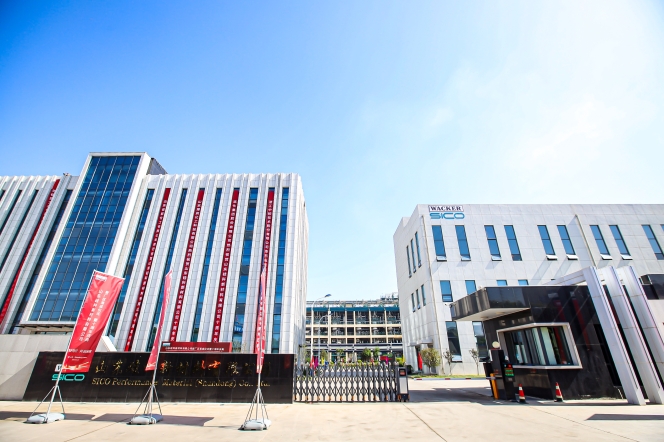
Wacker Chemie AG has strengthened its position in China’s fast-growing market for silicone specialities by opening a new application development centre with joint-venture partner SICO Performance Material in the eastern city of Jining.
The 2,300-square-metre facility brings together several laboratories focused on organofunctional silanes, which are used as high-performance additives in plastics, coatings and adhesives. By locating the centre next to SICO’s production and scale-up lines, Wacker aims to shorten development cycles and move new products into the market more quickly. The companies said investment in the site is in the mid-six-figure euro range.
Tom Koini, who leads Wacker’s silicones division, said the opening marks an important step in its China strategy. “As a provider of innovative silicone specialties and solutions, we can use this development center to achieve a key milestone for our business in China. Our focus is on high-margin specialty silanes, for which demand in China is rising continuously. This investment together with our partner SICO strengthens our presence and commitment to the region,” he said.
Wacker, which took a majority stake in SICO in 2022, is seeking to build a larger share of China’s specialty chemicals market, where demand for hybrid polymers has increased for years. These materials help improve the mechanical and chemical properties of adhesives, sealants, coatings and engineered plastics, all of which are used in sectors such as electric mobility, electronics and power equipment.
At the opening ceremony, SICO General Manager Kevin Qu called the centre an investment in the long term. “We can now pool all of our silane expertise here at our application development centre. This know-how ranges from chemical product properties and supply chain matters through to questions of process engineering and current marketing trends. We will leverage this in-depth knowledge to develop forward-looking innovations for our customers. This marks a new chapter of success in the history of our joint venture,” he said.
The companies said the centre will act as a link between research, technical service and manufacturing teams. Scientists will focus on developing additives, adhesion promoters and stabilisers based on organofunctional silanes and functional silicone fluids.
- Association of Natural Rubber Producing Countries
- ANRPC
- Natural Rubber
- Monthly NR Statistical Report
ANRPC Publishes Monthly NR Statistical Report For October 2025
- By TT News
- November 29, 2025

The Association of Natural Rubber Producing Countries (ANRPC) has released its Monthly NR Statistical Report for October 2025, providing an overview of key developments in the global natural rubber sector.
According to the report, the global natural rubber market in October was characterised by a distinct bearish trend in pricing. This decline can primarily due to a significant surge in production and export activities, which were initially stimulated by the higher prices seen earlier in the year. Meanwhile, overall demand has remained relatively subdued.
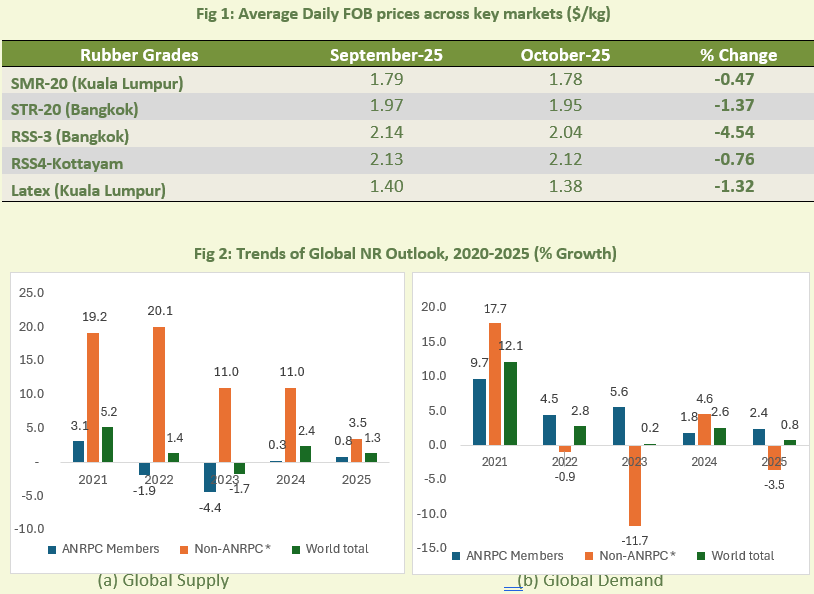
Looking ahead to the full year, projections indicate a modest 1.3 percent increase in global production for 2025, a figure that follows a recent downward revision for Indonesia. On the demand side, consumption is anticipated to grow by a slight 0.8 percent, influenced by an upward adjustment to Indonesia's consumption data. Despite the current price pressures, market sentiment shows some mixed signs of improvement, particularly within the tyre trade of certain specific markets.
DuPont Breaks Ground On Major MOLYKOTE Lubricants Plant In China
- By TT News
- November 28, 2025
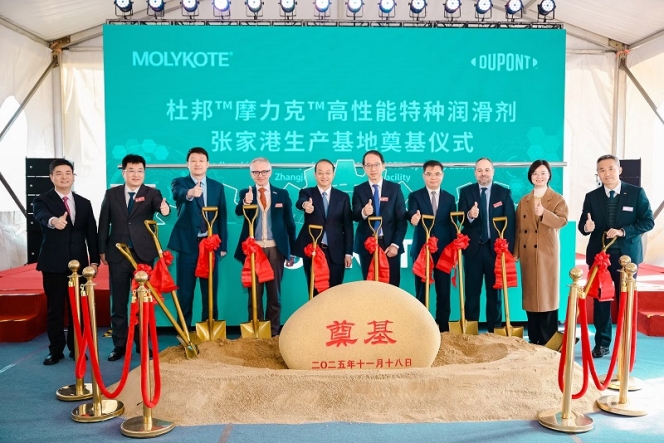
DuPont commenced construction on a new MOLYKOTE speciality lubricants production facility in Zhangjiagang, Jiangsu Province, East China, on 18 November 2025 with a groundbreaking ceremony that was attended by Senior DuPont leadership from the MOLYKOTE business and the Asia-Pacific region, alongside government officials and key customers. This strategic investment, situated within the Yangtze River International Chemical Industrial Park, is projected to be fully operational by the beginning of 2027. The initiative is a key component of the brand's global expansion, designed to significantly enhance its responsiveness to regional market needs and foster local innovation.
The new plant will primarily focus on meeting the robust and growing demand for advanced lubricant solutions across several critical sectors in China, including transportation, industrial manufacturing, energy and electronics. By establishing a local manufacturing presence, DuPont aims to create a dynamic platform for collaboration with regional customers. This will enable the company to deliver next-generation lubricants with greater speed, precision and agility, ultimately shortening lead times and strengthening supply chains.
The MOLYKOTE brand, with a legacy spanning over 75 years, is globally recognised for its expertise in solving complex lubrication challenges and improving energy efficiency. Its comprehensive product portfolio, which includes greases, oils, anti-friction coatings and pastes, serves the automotive and industrial maintenance, repair and overhaul markets worldwide. Supported by a global network of manufacturing and research facilities, the brand continues to build on its reputation for performance and reliability.
Eugenio Toccalino, Vice President and General Manager, DuPont MOLYKOTE, said, “Today’s groundbreaking is the beginning of a new chapter in our journey to better serve our customers in China, innovate faster and to be a partner of choice for solving wear and friction challenges across industries. This facility will boost local capabilities for application and new formulation development, empowering customer collaboration and response in real time.”
Yi Zhang, Global VP and Regional President, DuPont Asia Pacific, said, “We are thrilled to be breaking ground on the MOLYKOTE China production facility in Zhangjiagang. This manufacturing unit will enable us to address current needs and future trends for speciality lubricants. It reflects our confidence in the long-term potential of customers in China and Asia-Pacific region and reinforces our commitment to deliver faster, more resilient and locally tailored solutions.”


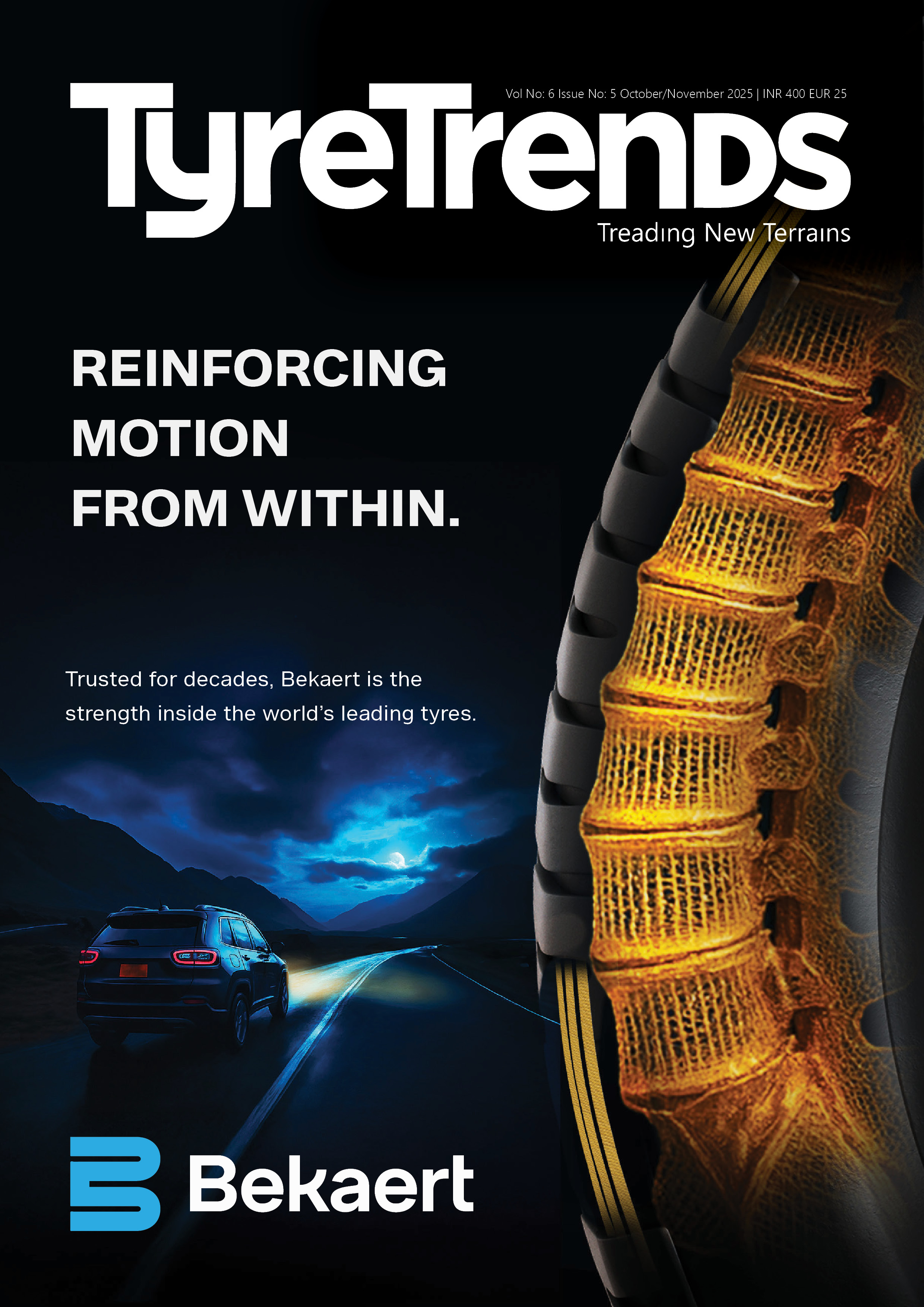



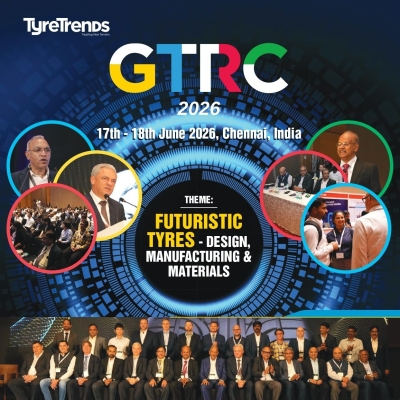
Comments (0)
ADD COMMENT